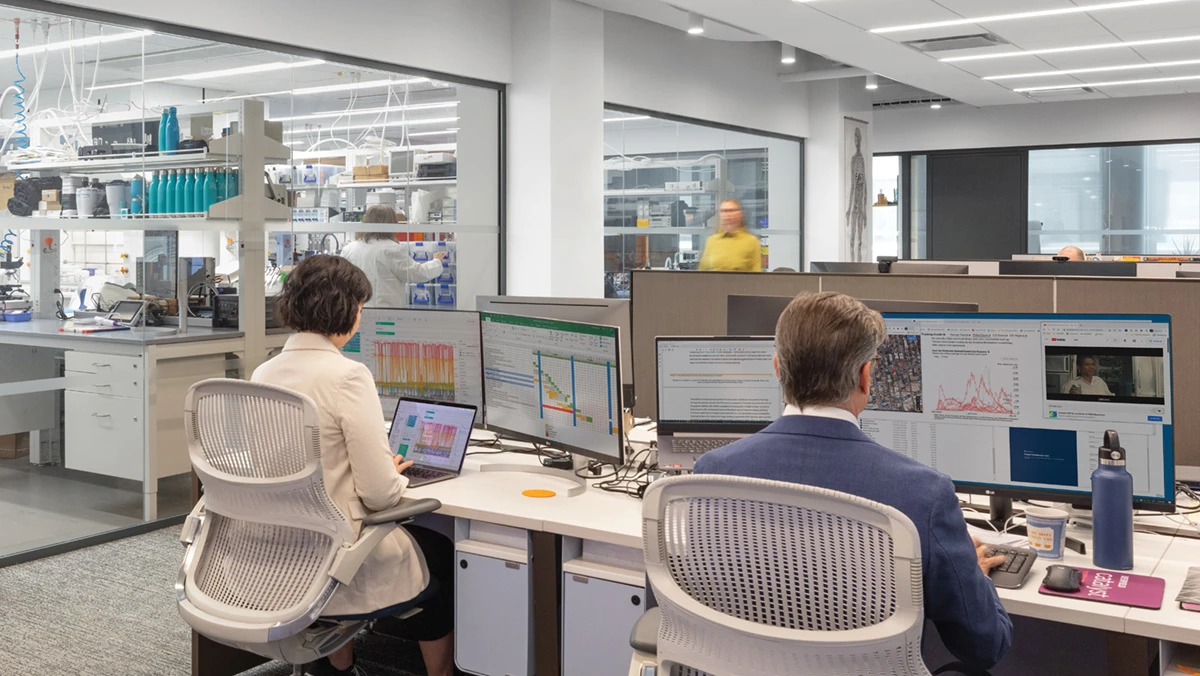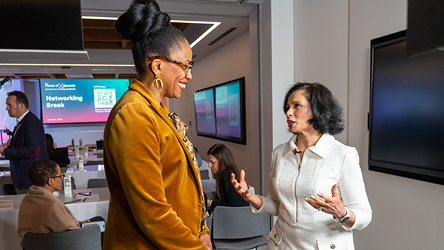September 20, 2024
Article
Building a Defense Against Future Global Pandemics

Overview
Jonathan Lai, PhD, is developing vaccine prototypes to prepare for or prevent future pandemics, with support of a 2021 XSeed Award.
Focus on viral entry into cells spurs vaccine research
Jonathan Lai, PhD, professor of biochemistry at Albert Einstein School of Medicine, is developing vaccine prototypes that will prepare for or prevent future pandemics. He explains how winning a 2021 XSeed Award was integral to his research.
This conversation has been edited for length and clarity.
Cure: Your research at Einstein is in viruses and antibodies. Where did your interest in this field begin?
Jonathan Lai: As a postdoc, I became interested in how proteins fold and how that change in shape can affect different processes, one of them being how viruses get into cells. It turns out that if you can block that folding process, it can have an antiviral effect.
That very basic part is what I became passionate about — understanding how a virus gets in the cell, and how that ultimately can lead to therapeutic antibody discovery and vaccine design. Ever since I started my program at Einstein, although the techniques and the viruses have changed, that's what we’ve always focused on.
Cure: How did you your career at Einstein evolve into your current focus?
Lai: Early on, my lab was doing a lot of work on Ebola virus and HIV-1, which are “class I” viruses, but one of my colleagues, Margaret Kielian, was studying alphaviruses, which are “class II” viruses that adopt a different protein fold to enter cells. She is really an expert here at Einstein in understanding the pathways that class II viral fusion proteins utilize to infect cells. I became interested in them from listening to a lot of her presentations. Margaret and I started to collaborate, first with Dengue viruses, and then that expanded into alphaviruses, and specifically, the Chikungunya virus.
Cure: The public has PTSD when we hear the word “virus.” What’s the magnitude of the threat from Chikungunya?
Lai: Chikungunya virus is a global virus spread by mosquitoes that can cause a protracted musculoskeletal disease, basically an arthritis that can persist for years after the infection. Currently, there's no way to treat that condition. Chikungunya virus went from being a very regional virus discovered in 1952 to spreading to multiple continents and causing multinational epidemics by the early 2000s. The way Chikungunya virus became a global pathogen was a small adaptive mutation that allowed it to be spread efficiently by two types of mosquitoes.
Mayaro virus is a sister or brother virus that’s currently limited to rural forest areas in South America. But as urbanization continues and people start to develop forested areas, it's just a natural consequence that they may be bitten by a mosquito, which may lead to the virus adapting and being spread more efficiently. A small adaptation that allows new species of mosquito to spread the virus is a realistic concern.
Cure: How does your work aim to contain this threat?
Lai: The antibodies we’re trying to develop would be able to hit not only Chikungunya virus, but also Mayaro virus and other viruses in that family as well. The idea is that not only would we have something we could use against the known Chikungunya virus, but against some of these other viruses that might emerge globally in time.
Because, as you can imagine, after the COVID-19 pandemic, the government has become very interested in a general strategy for vaccine or immunotherapy design that's based on a prototype pathogen approach. You may know that the reason the SARS-CoV-2 vaccine was designed and produced so quickly is because scientists had a lot of preceding information on SARS-CoV-1 and MERS-CoV, and the insights from those earlier studies gave them a pathway to how they should design the SARS-CoV-2 vaccine.
The National Institute of Allergy and Infectious Diseases (NIAID) thought this “prototype pathogen” approach should be applied to other viruses that could be of global concern. So they recently put out a call for proposals for people to come up with a prototype vaccine and antibody strategies, and I'm part of a consortium where we use the information that we got from the monoclonal antibodies to develop prototype pathogen vaccines for Chikungunya virus that potentially could be applied to other alphaviruses as well.
Cure: You received the XSeed Award back in 2021. Why did you apply for the XSeed Award?
Lai: Most academic labs are underfunded — the development of infectious disease therapies and vaccines is not an area that a lot of large pharma companies jump into because, as you’re probably aware, they tend to be more focused on things like oncology. So, it’s a constant battle to figure out, where can I get the funds to push this work forward. What we do is apply for grants and to engage the biotechnology community. That’s where something like the XSeed Award comes in.
Cure: What did the funding from the XSeed Award allow you to do — how did it further your research?
Lai: When I won this award, Chikungunya virus wasn't the major component of my lab — as I mentioned, we were studying other types of viruses. But the funding helped us start a program where we are trying to improve the qualities of these antibodies, and use them to facilitate next generation vaccine design.
We want to do a combination therapy, meaning have two different antibodies, and there’s some interest in bispecific antibodies, which are a two-in-one type of antibody molecule. We're pursuing all of these using the XSeed funding.
Cure: Who should apply for the XSeed Award?
Lai: Anyone who has an idea but may not have the resources or the current funding stream to support and explore that idea on a wider scale, that’s who should consider applying for this award. XSeed is rare in that it rewards the potential of an idea, and in some cases allows a new direction for a lab.
The XSeed Award can be transformational, because it recognizes that you have an area you want to develop and gives you the resources to pursue it. So, I'm really appreciative of the XSeed funding — it opened new doors for us in ways that we weren't anticipating at the time. I hope Cure keeps it up and even expands this program.
Cure: What is your advice to early career scientists?
Lai: The thing I stress for students is that you just never know where science is going to take you. It's important to pick your head up and look around and think: “How can this be applied to other things?” You could be studying something that really doesn't seem like it will have an effect on the world, and the next thing you know, it's really important for something like vaccine design.
It's hard to predict those types of trajectories. And it's why it's important to be open minded about all different types of Science, and to think as broadly as you can.
Now in its fourth year, the XSeed Award program provides up to $250,000 grants to New York City minority- and women-led life science and healthcare startups working on novel preclinical drug development projects. Winning teams also join the ecosystem of Cure.®, a healthcare innovation campus in New York City. The teams receive peer-learning and office hours with investors, entrepreneurs, and business experts. Learn more.





